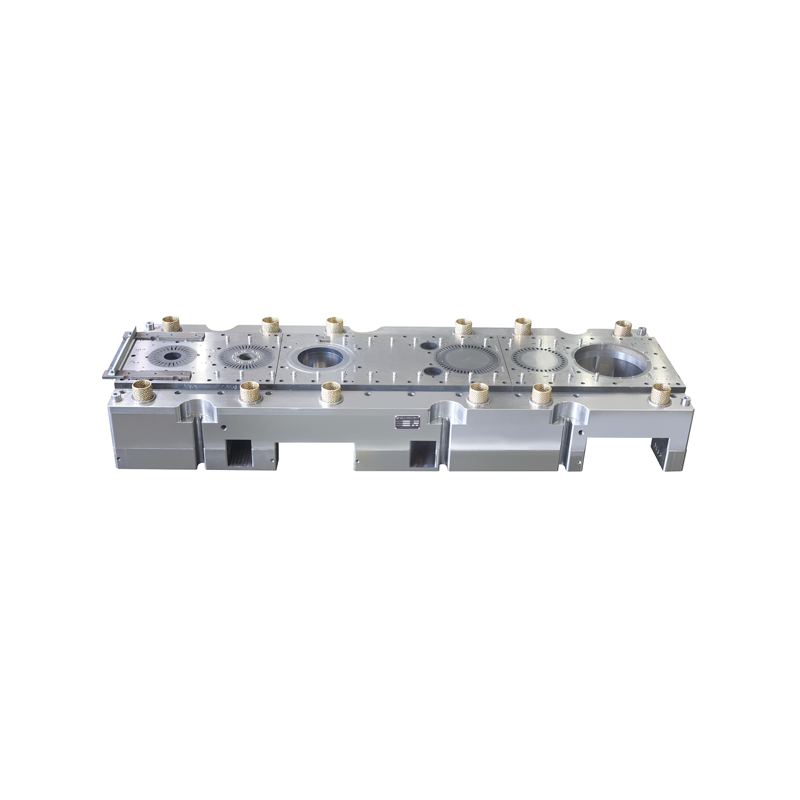 2025.07.04
2025.07.04
 Industry News
Industry News
The relentless demand surge in electric vehicles (EVs) has exposed a critical bottleneck: the ability to produce high-quality electric motor cores—the essential stators and rotors—fast enough. Traditional manufacturing methods are buckling under the pressure. Enter the next generation of Motor Core Mold technology, engineered explicitly for efficiency and productivity, emerging as the linchpin for automakers scrambling to scale.
The challenge is stark. Major EV producers, including industry Tesla, have publicly wrestled with motor production constraints impacting ambitious vehicle rollout targets. "Our biggest hurdle wasn't battery cells last quarter; it was getting enough stators out the door at the required quality," admitted a sourcing executive from a top-tier EV manufacturer, speaking on condition of anonymity. "Legacy tooling simply couldn't keep pace with our assembly lines."
This is where the transformative power of modern Motor Core Mold design shines. Unlike conventional molds, these advanced systems integrate multiple breakthroughs:
Blistering Speeds: Capable of sustained operation exceeding 800 strokes per minute (SPM) and often reaching 1200 SPM, these Motor Core Mold units drastically increase output per hour compared to older models operating at 300-500 SPM.
Complexity in a Single Stroke: Utilizing sophisticated multi-stage progressive die designs, a single Motor Core Mold can transform flat electrical steel laminations into intricate, near-net-shape motor cores in one continuous operation. This eliminates numerous secondary steps, slashing cycle times and handling errors.
Seamless Automation: Designed from the ground up for integration, these Motor Core Mold systems feature automated feeding, precision part ejection, and integrated vision inspection. This allows them to slot directly into high-volume, lights-out production cells.

Rapid Changeover: Advanced quick-change systems minimize downtime when switching between different motor core designs, essential for manufacturers handling diverse EV platforms or industrial motor variants. The flexibility of a modern Motor Core Mold is as crucial as its speed.
Case in Point: Powering Past the Bottleneck
NexCore Precision Tooling, a California-based supplier, faced this challenge head-on with a major EV client struggling to meet stator production goals. The client's existing presses, equipped with older-generation Motor Core Mold technology, were maxed out at 65,000 stators per day—far below the 200,000 units needed for upcoming models.
NexCore engineered a solution centered on a high-speed, 1200-ton press fitted with their proprietary "Vortex Series" Motor Core Mold. This Motor Core Mold was a multi-stage progressive die specifically designed for the client's complex stator design, featuring integrated automation for material handling and laser-etched serialization.
"The leap wasn't incremental," stated James McCullough, CEO of NexCore. "Our Motor Core Mold solution, running consistently at 980 SPM, enabled the press to output over 20,000 stators per hour. More critically, the Motor Core Mold's reliability and built-in inspection meant minimal downtime and virtually zero scrap escaping to the client's motor assembly line."
The result? The production line consistently achieved its 200,000-unit daily target within six weeks of implementation. The client avoided costly delays to two critical EV launches and significantly reduced per-unit manufacturing costs due to the Motor Core Mold's efficiency. "It wasn't just about speed," McCullough emphasized. "It was about delivering predictable, high-volume, flawless output. That's what our Motor Core Mold technology delivers."
Beyond EVs: A Broader Industrial Impact
While the EV sector provides the urgent demand signal, the advantages of these high-efficiency Motor Core Mold systems extend across the electrification spectrum:
Wind Energy: Gigawatt-scale wind turbine installations require massive generators. High-speed Motor Core Mold production is crucial for manufacturing the enormous quantities of large-diameter laminations efficiently.
Industrial Automation & HVAC: The push for IE4 and IE5 premium efficiency motors in factories and buildings demands more complex core geometries produced cost-effectively at scale, again relying on advanced Motor Core Mold capabilities.
Consumer Appliances & E-Mobility: From high-performance washing machines to e-bikes and scooters, smaller but complex motors benefit immensely from the precision and speed of modern Motor Core Mold production.
The Engine of Smart Manufacturing
This evolution in Motor Core Mold technology is intrinsically linked to Industry 4.0. The latest Motor Core Mold systems are equipped with sensors monitoring critical parameters like tonnage, vibration, and temperature in real-time. This data feeds into predictive maintenance systems, preventing unplanned downtime—a major cost killer in high-volume production. The Motor Core Mold becomes a data node within the smart factory, optimizing its own performance and contributing to overall equipment effectiveness (OEE).
"The Motor Core Mold is no longer just a piece of hard tooling," commented Dr. Aris Thorne, a manufacturing technology specialist at the Global Electrification Institute. "It's an intelligent, high-speed production module. The integration of speed, multi-stage complexity handling, and data connectivity in the modern Motor Core Mold is what allows motor manufacturers to finally align with the aggressive ramp curves demanded by electrification across all sectors. Investing in this level of Motor Core Mold sophistication isn't optional for serious players anymore; it's the baseline for competitiveness."
As global industries accelerate their shift towards electrification, the pressure on motor production will only intensify. The limitations of outdated manufacturing methods are painfully clear. The advanced Motor Core Mold, with its unparalleled blend of high-speed operation, single-stroke complexity, seamless automation integration, and rapid adaptability, has emerged as the indispensable enabler. It transforms production bottlenecks into throughput surges. Companies investing in this critical Motor Core Mold technology are not just buying faster tooling; they are securing the foundational capability to meet soaring market demand, deliver on time, and maintain a crucial competitive edge in the fast lane of the electrified future. The Motor Core Mold is truly the high-velocity heart of modern motor manufacturing."